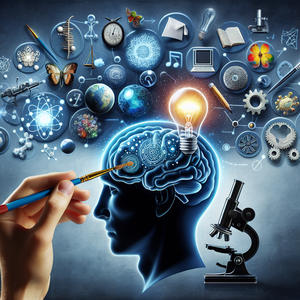The Intersection of Technology and Fashion: Careers at the Cutting Edge

One of the most fascinating developments in fashion technology is the emergence of virtual fashion designers. These creatives specialize in designing digital garments that exist solely in virtual environments, utilizing sophisticated 3D modeling software and virtual reality tools. Brands like Balenciaga and Gucci have already ventured into this realm, launching collections that can be worn by digital avatars across gaming platforms and social media. The appeal of virtual fashion lies in its ability to cater to a generation that values digital identity and self-expression. Virtual fashion designers must possess a unique combination of artistic vision and technical skills, making this career path both innovative and rewarding. For instance, the rise of platforms like Roblox has created a market for digital fashion, as users seek unique and stylish outfits for their avatars. This trend showcases how virtual fashion designers are not only pushing creative boundaries but also tapping into new revenue streams for fashion houses.
Fashion Tech Entrepreneurs: Merging Innovation with Style
Another area experiencing rapid growth is that of fashion tech entrepreneurs. These individuals are at the forefront of developing innovative products and services that integrate fashion with technology. From wearable technology like smartwatches to online platforms enhancing the shopping experience, fashion tech entrepreneurs are revolutionizing consumer engagement. A prime example is the integration of augmented reality (AR) in retail. Brands like Warby Parker and IKEA have successfully employed AR technology, allowing customers to virtually try on glasses or visualize furniture in their homes before purchase. This innovative approach enhances the shopping experience, making it more interactive and personalized. Fashion tech entrepreneurs must possess sharp market insight and technical acumen, enabling them to identify gaps and create solutions that resonate with consumers.
The Impact of AI and Data Analytics
Artificial intelligence (AI) and data analytics are playing an increasingly pivotal role in the fashion industry. Professionals skilled in these technologies are crucial for brands looking to gain a competitive edge. From predictive analytics that forecast trends to AI-driven design tools that streamline the creative process, the demand for data scientists and AI specialists within fashion is on the rise. For example, companies like Stitch Fix leverage AI algorithms to analyze customer preferences and curate personalized clothing selections. This approach not only enhances customer satisfaction but also optimizes inventory management, reducing waste and improving sustainability. Professionals equipped with the ability to harness these technologies are positioned at the forefront of a data-driven fashion future.
Sustainability Meets Innovation
With growing concerns about environmental impact, careers focused on sustainable fashion technology are emerging. This includes roles in material innovation, recycling technologies, and enhancing supply chain transparency. As consumers increasingly prioritize sustainability, fashion companies are seeking professionals who can drive eco-friendly solutions. For instance, Bolt Threads is pioneering lab-grown materials that replicate silk, significantly mitigating the environmental costs associated with traditional silk production. Professionals in this field must navigate both sustainability practices and technological advancements, making it a challenging yet fulfilling career path. This commitment to innovation not only enhances brand reputation but also addresses consumer demand for responsible fashion practices.
The intersection of technology and fashion signifies a transformative shift in the industry, fostering new careers that blend creativity with technical proficiency. As we explore the roles of virtual fashion designers, fashion tech entrepreneurs, data analysts, and sustainability innovators, it becomes evident that the future of fashion is not solely defined by the garments we wear but also by the technology that drives the industry forward. For aspiring professionals willing to embrace change and explore the synergies between these dynamic fields, the opportunities are vast and promising. As this exciting era unfolds, the fashion landscape will continue to evolve, highlighting the integral role of technology in shaping the future of style.
3D Fashion Designer
Balenciaga, Gucci, digital fashion startups
Core Responsibilities
Create detailed 3D models of garments using software such as Clo3D or Marvelous Designer.
Collaborate with fashion designers to translate their sketches into virtual prototypes.
Test and iterate on designs to ensure realistic draping and fit in virtual environments.
Required Skills
Proficiency in 3D modeling software and a strong understanding of textiles and garment construction.
Ability to visualize and execute design concepts in a digital format.
Knowledge of the fashion industry and current trends.
Fashion Data Analyst
Stitch Fix, ASOS, fashion tech firms
Core Responsibilities
Analyze sales data to identify trends and inform product development and marketing strategies.
Utilize statistical tools to forecast sales and consumer behavior patterns.
Collaborate with marketing and product teams to optimize inventory and reduce waste.
Required Skills
Strong analytical skills with experience in data visualization tools like Tableau or Power BI.
Familiarity with programming languages such as Python or R for data manipulation.
Ability to communicate complex data insights to non-technical stakeholders.
Wearable Technology Developer
Fitbit, Apple, emerging fashion tech startups
Core Responsibilities
Design and prototype wearable tech products, integrating sensors and smart technology into fashion items.
Collaborate with engineers and designers to ensure functionality and aesthetics of products.
Conduct user testing to gather feedback and iterate on designs.
Required Skills
Background in electronics, software development, or fashion design with an emphasis on technology.
Experience with programming languages such as C++ or Swift and familiarity with IoT (Internet of Things) principles.
Strong problem-solving skills and creativity in merging fashion with technology.
Sustainable Fashion Innovator
Bolt Threads, Stella McCartney, eco-conscious fashion companies
Core Responsibilities
Research and develop sustainable materials and production processes to reduce environmental impact.
Collaborate with designers and manufacturers to implement eco-friendly practices in product development.
Advocate for sustainable practices within the organization and to consumers.
Required Skills
Knowledge of sustainable materials, recycling technologies, and environmental regulations.
Strong project management skills and the ability to work across multiple teams.
Passion for sustainability and innovation in the fashion industry.
Augmented Reality (AR) Experience Designer
Warby Parker, IKEA, technology firms focused on AR solutions
Core Responsibilities
Develop AR experiences for retail environments, enabling customers to virtually try on products or visualize items in their space.
Collaborate with marketing and design teams to create engaging user experiences that enhance customer interaction.
Monitor and analyze user engagement metrics to refine and improve AR applications.
Required Skills
Proficiency in AR development platforms such as Unity or ARKit.
Strong understanding of user experience (UX) design principles and customer behavior.
Experience with graphic design and visual storytelling.


